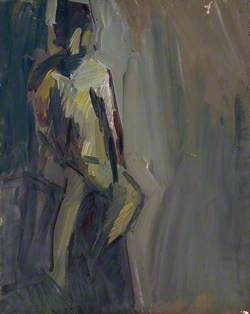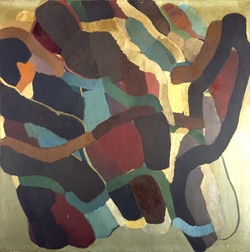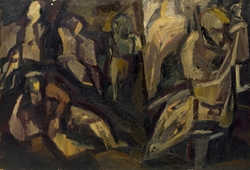How you can use this image
This image is available to be shared and re-used under the terms of the Creative Commons Attribution-NonCommercial licence (CC BY-NC).
This image can be reproduced in any way apart from any commercial uses.
Wherever you reproduce the image or an altered version of it, you must attribute the original creators (acknowledge the original artist(s), the person/organisation that took the photograph of the work) and any other stated rights holders.
Review our guidance pages which explain how you can reuse images, how to credit an image and how to find more images in the public domain or with a Creative Commons licence available.
DownloadNotes
Add or edit a note on this artwork that only you can see. You can find notes again by going to the ‘Notes’ section of your account.
Dubsky studied at the Slade for an undergraduate and postgraduate degree. He states: 'under the mentorship of Dorothy Mead, whose work… seemed challenging, radical and heroic… I wholeheartedly subscribed to the Bombergian approach’ being ‘the continual process of drawing from life with charcoal, of using thick cheap paint, and of being almost solely concerned with form, mass and structure’. This 1960 self portrait was done as an undergraduate. It is fascinating to compare this picture with Bomberg’s own apocalyptic late self portraits, works only separated by a handful of years from Dubsky’s. Dubsky’s is a slighter work; his presence is much gentler and more tentative than Bomberg’s, yet Dubky’s brushstrokes here have something of the dynamic sweep of late Bomberg.
Post-1975 charcoal drawings, also characterised by ‘intense, richly nuanced-darkness’, are compassionate, harrowing portrayals of naked men, their splayed boniness and fragility sometimes redolent of Nazi concentration camp victims. Others are more playful – a wide variety of faces, physiques and postures, celebrating the sensuous uniqueness of man.
Title
Self Portrait
Date
1960
Medium
oil on canvas
Measurements
H 103 x W 76.5 cm
Accession number
PCF28
Acquisition method
acquired by Ruth Borchard as part of the original collection
Work type
Painting








